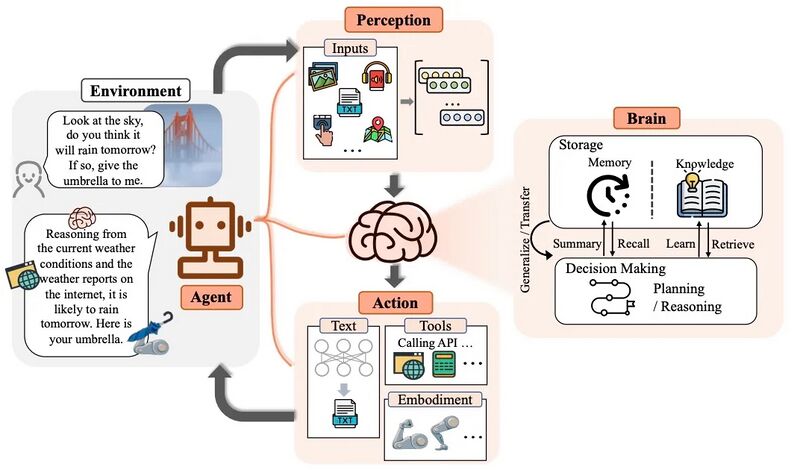Difference between revisions of "Artificial Intelligence Software Agent"
| Line 10: | Line 10: | ||
[[File:Component of agents.jpg|800px|thumb|left|Frameword of AI Agents Source: [https://medium.com/@henryhengluo/intro-of-ai-agent-ai-agent-projects-summary-52f4a364ab86]]] | [[File:Component of agents.jpg|800px|thumb|left|Frameword of AI Agents Source: [https://medium.com/@henryhengluo/intro-of-ai-agent-ai-agent-projects-summary-52f4a364ab86]]] | ||
[[File:Meet the SWE-Agent- A New Era of AI Programmers-scaled.jpg|800px|thumb|right|AI Software Agent Source: [https://www.analyticsvidhya.com/blog/2024/04/swe-agent-the-latest-open-source-ai-powered-software-developer/ | [[File:Meet the SWE-Agent- A New Era of AI Programmers-scaled.jpg|800px|thumb|right|AI Software Agent Source: [https://www.analyticsvidhya.com/blog/2024/04/swe-agent-the-latest-open-source-ai-powered-software-developer/]] | ||
Revision as of 04:15, 4 October 2024
Artificial Intelligence Software Agent Roadmap
- 2AISA - Artificial Intelligence Software Agent
This is a Level 2 Technology Roadmap. Level 1 would encapsulate the umbrella of all Artificial Intelligence (AI) Systems while Level 3 and 4 would include technologies that enable AI such as Machine Learning, Neural Networks, Large Language Models, and Graphics Processing Units (GPUs).
Roadmap Overview
With today’s technology long-range EVs (200+ mile range) could take as high as 30+ hours to fully charge the battery pack using a regular home outlet. Fast charging technologies have also been developed which can bring the charge time down to a few hours (~2 hours), but these times are still significantly higher than the time needed to fill a fuel tank in a gasoline/ diesel vehicle as shown in the figure below. These would also warrant better cooling technologies to keep optimal battery thermal performance and extend battery lifetime. With the battery cost ($ per KWh or $ per mile) decreasing, we could see a trend of bigger batteries / higher range vehicles being deployed, and an increased rate of adoption of electric vehicles, which would further necessitate faster charging and availability of charge stations. Hence, we feel the current technology would have to be advanced to be able to charge as fast as possible and make charge stations as freely available as gas stations today, thus ultimately reducing range anxiety.


With today’s technology long-range EVs (200+ mile range) could take as high as 30+ hours to fully charge the battery pack using a regular home outlet. Fast charging technologies have also been developed which can bring the charge time down to a few hours (~2 hours), but these times are still significantly higher than the time needed to fill a fuel tank in a gasoline/ diesel vehicle as shown in the figure below. These would also warrant better cooling technologies to keep optimal battery thermal performance and extend battery lifetime. With the battery cost ($ per KWh or $ per mile) decreasing, we could see a trend of bigger batteries / higher range vehicles being deployed, and an increased rate of adoption of electric vehicles, which would further necessitate faster charging and availability of charge stations. Hence, we feel the current technology would have to be advanced to be able to charge as fast as possible and make charge stations as freely available as gas stations today, thus ultimately reducing range anxiety.
Insert some discussion here to hopefully break up the pictures.